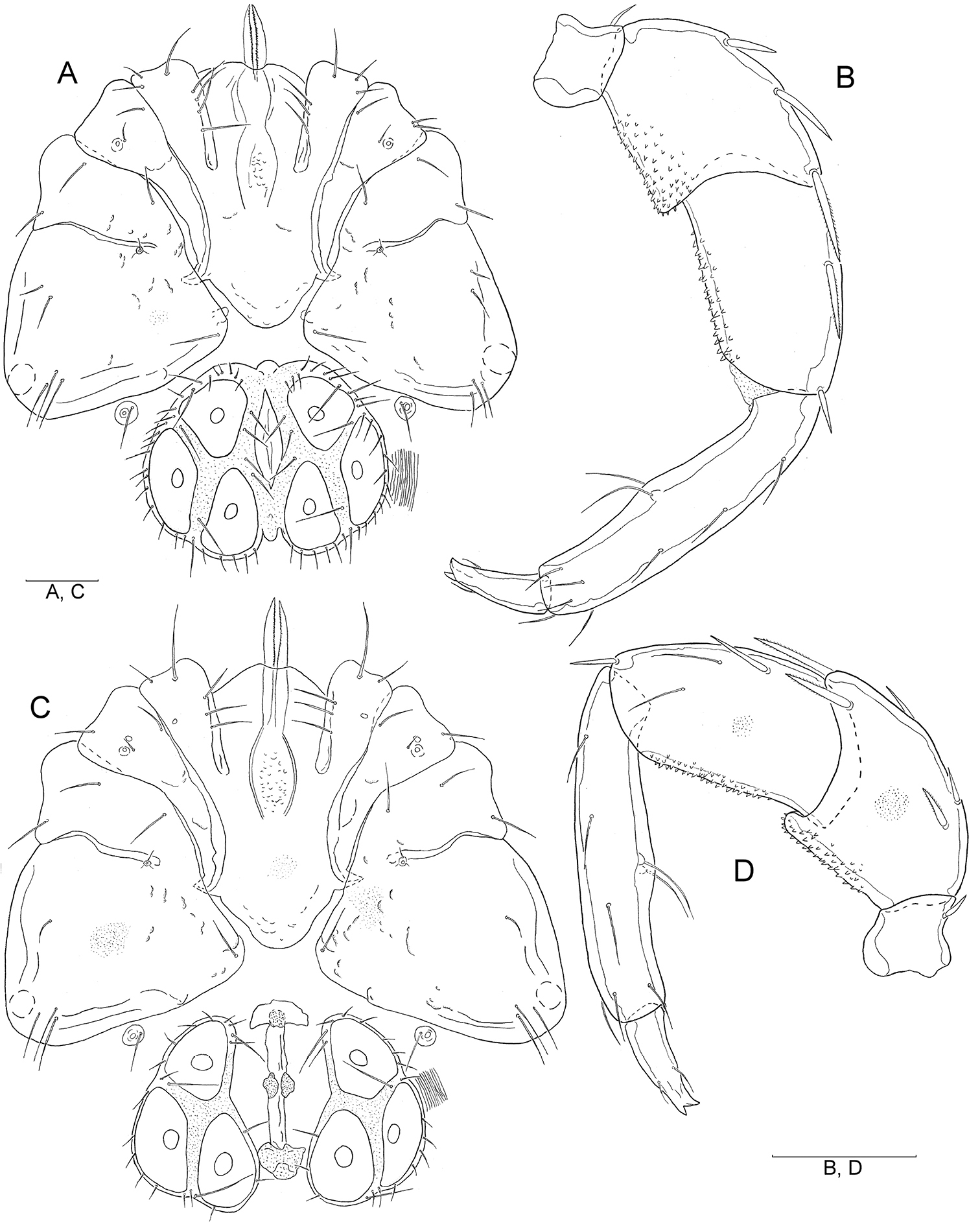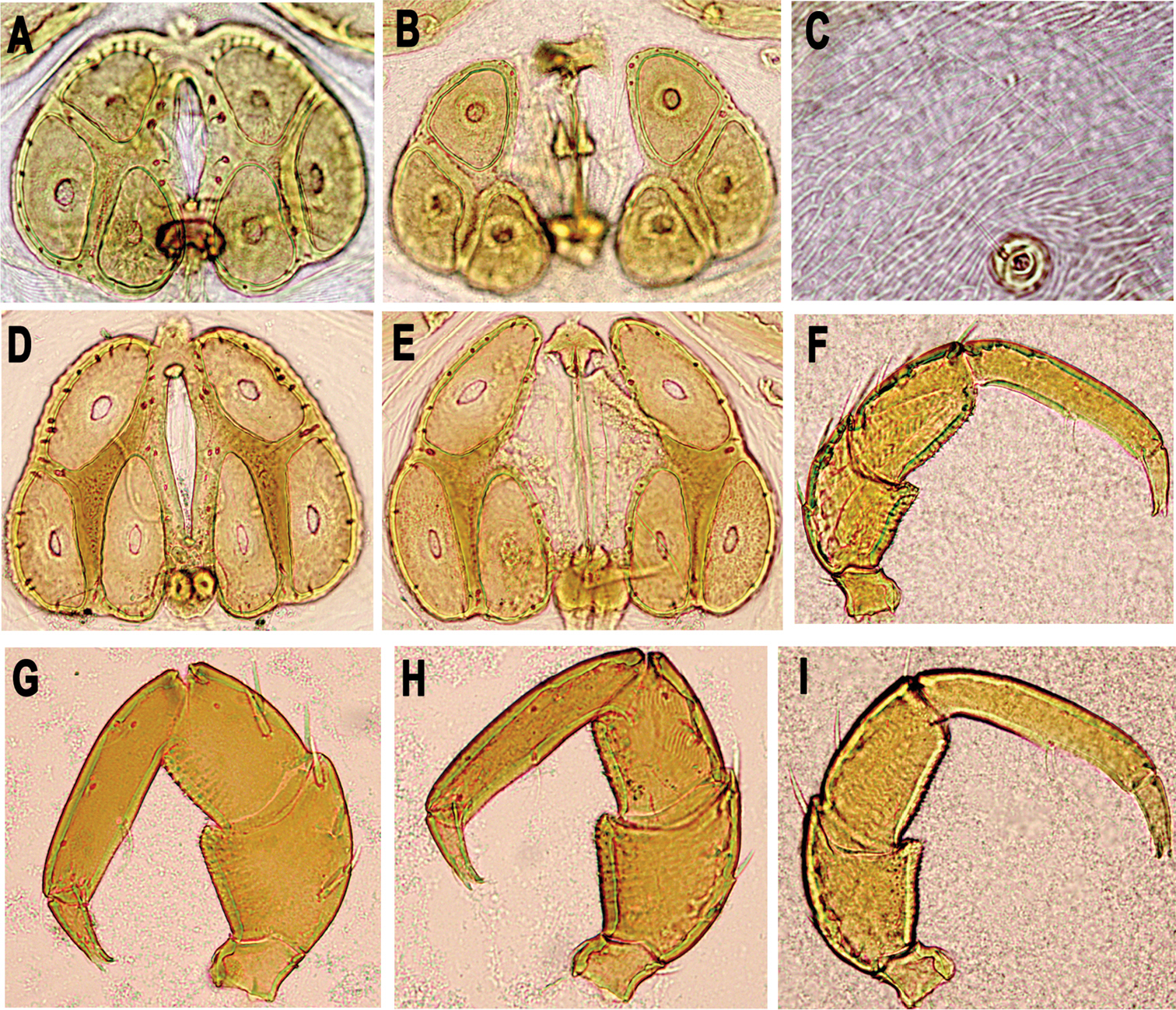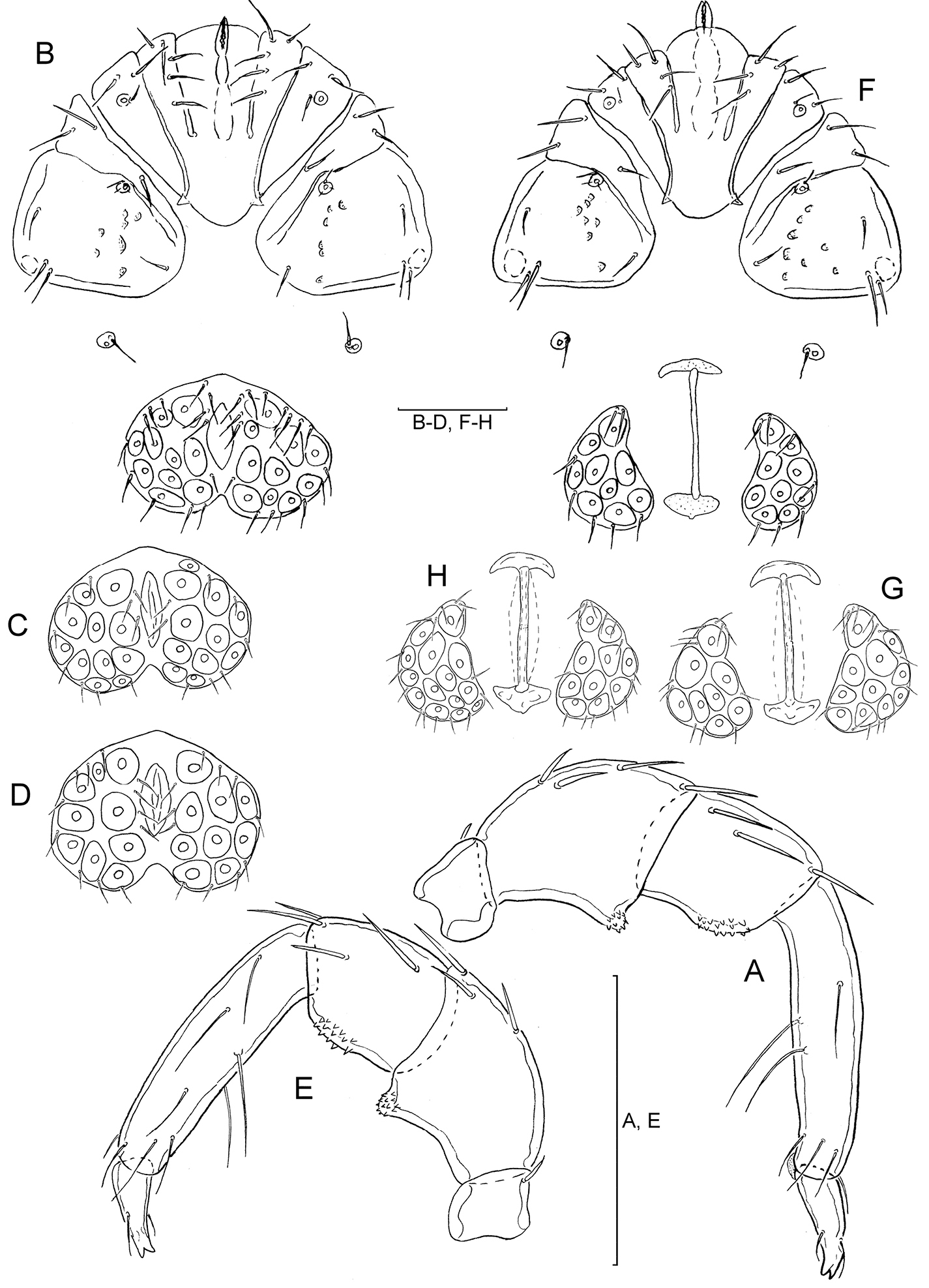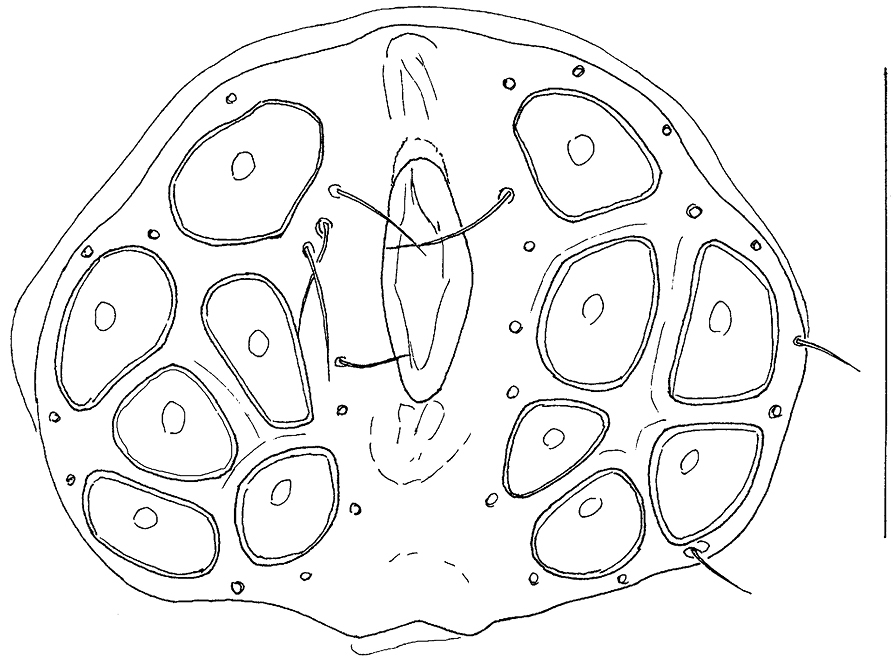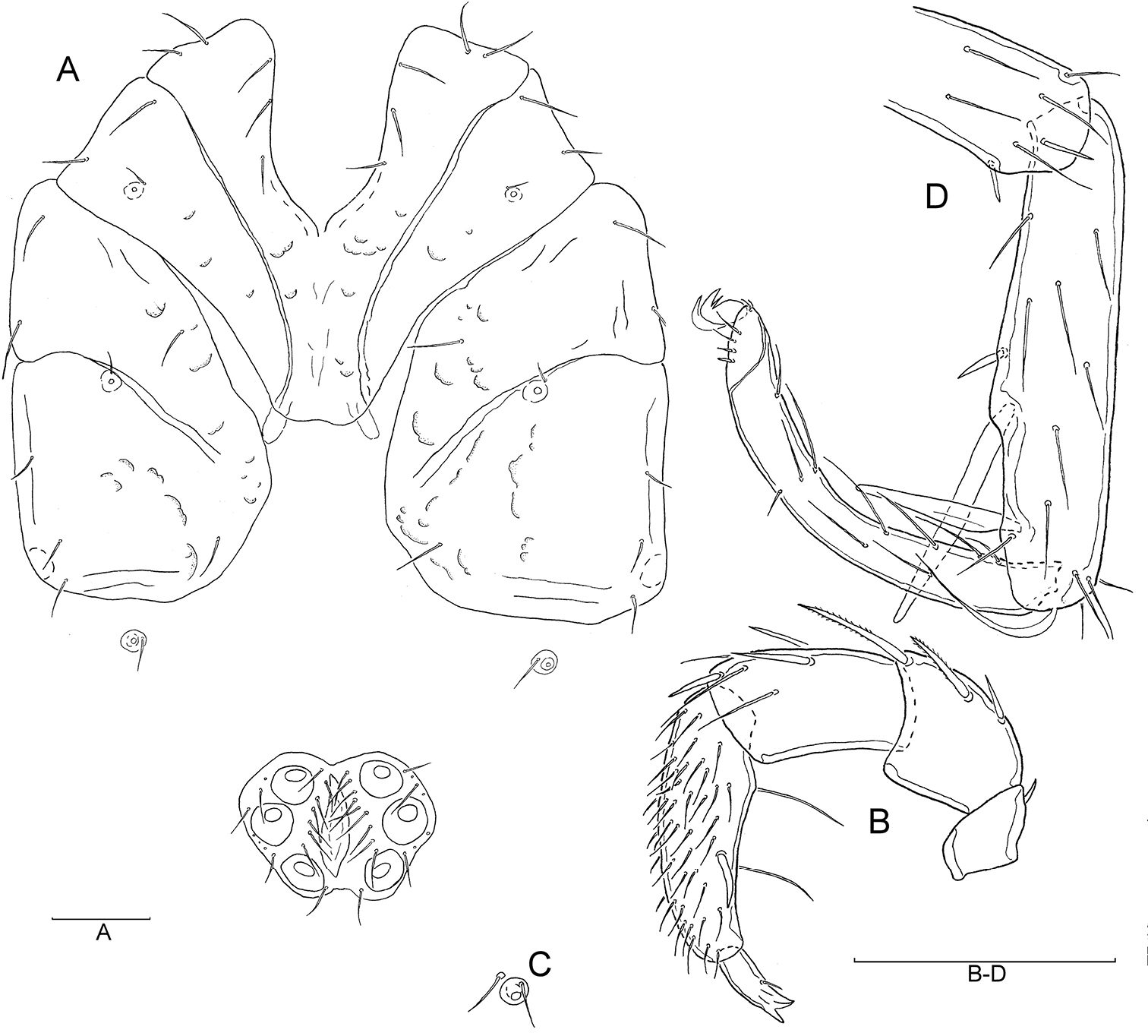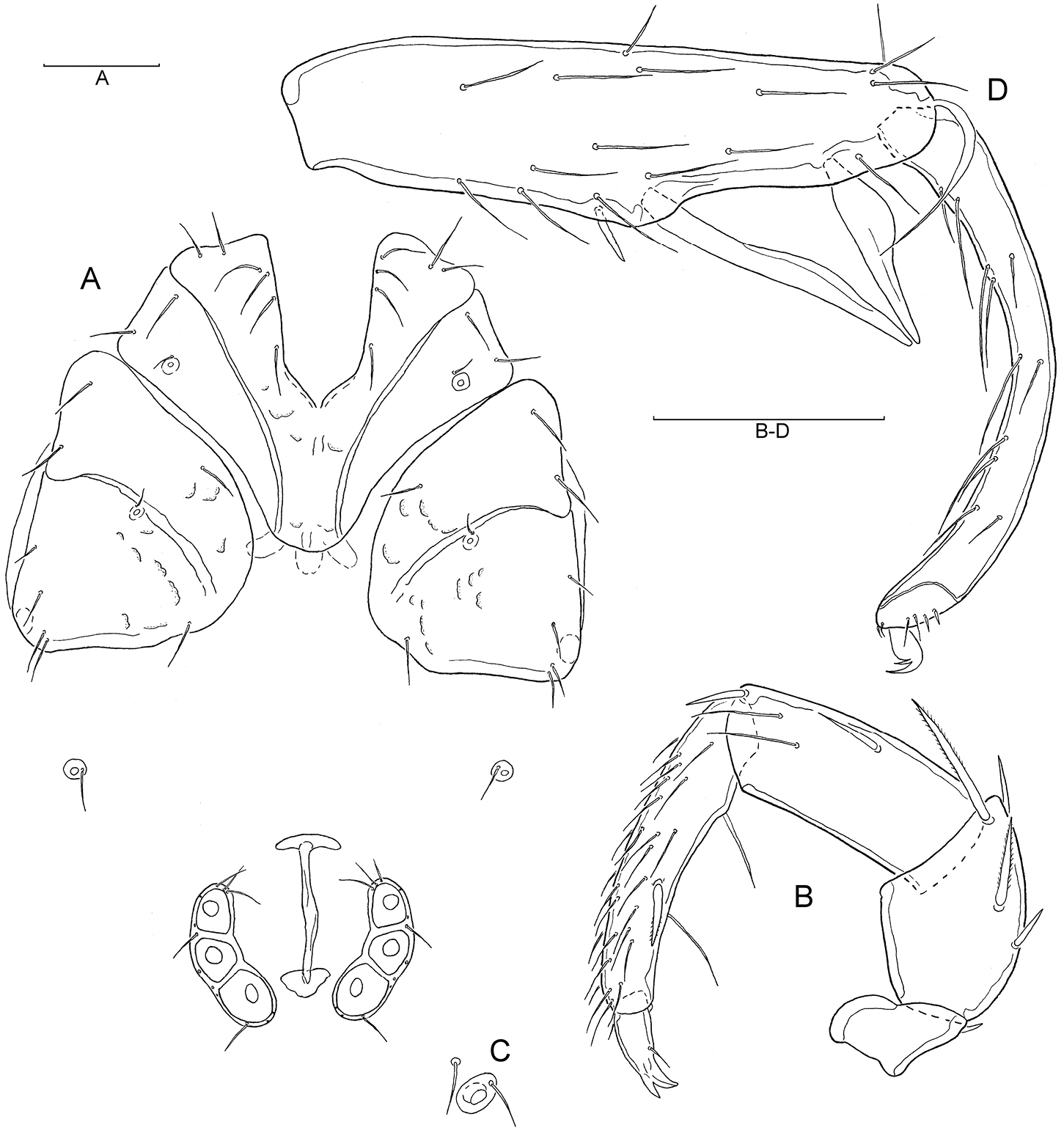






(C) 2013 Yunus Esen. This is an open access article distributed under the terms of the Creative Commons Attribution License (CC BY 4.0), which permits unrestricted use, distribution, and reproduction in any medium, provided the original author and source are credited.
For reference, use of the paginated PDF or printed version of this article is recommended.
Citation: Esen Y, Pešić V, Erman O, Kaya Y (2013) New water mites of the family Hygrobatidae (Acari, Hydrachnidia) from Turkey. ZooKeys 361: 15–25. doi: 10.3897/zookeys.361.6389
In this study, the findings of three water mite species of the family Hygrobatidae collected from different streams in Turkey were evaluated. Hygrobates (s. str.) anatolicus Esen & Pešić, sp. n. is described as new for science. Hygrobates (Rivobates) diversiporus Sokolow, 1927 and Atractides (s. str.) nikooae Pešić, 2004, which were illustrated and thoroughly discussed, are new records for the Turkish fauna.
Acari, Hygrobatidae, water mites, new records, Turkey
After the family Arrenuridae Thor, 1900, the Hygrobatidae Koch, 1842 is the most species-rich in Turkey. So far, 42 species have been found in Turkey (
During a survey of the freshwater fauna of Kahramanmaraş, Malatya and Siirt Provinces, Turkey, three interesting species for the Turkish fauna were collected. This article aims to describe this material and contribute to our knowledge of water mites distribution in Turkey.
During fieldwork, water mites were collected by hand netting, sorted on the spot from the living material, conserved in Koenike’s fluid and dissected as described elsewhere (e.g.,
The composition of the material is given as: (males/females/deutonymphs). All measurements are given in micrometers. For a detailed description and discussion of the characteristics of the genus Atractides and a detailed methodological introduction, see
http://zoobank.org/AE8FEF58-1CEE-4F5F-BFC7-EFEFBFC71BE6
http://species-id.net/wiki/Hygrobates_anatolicus
Figs 1, 2A–C, F, IHolotype: male, dissected and slide mounted in Hoyer’s fluid, Turkey: Kahramanmaraş Province, Çağlayancerit, Göksu stream, 37°44'26"N, 37°22'21"E, 975 m asl., 28.10.2010. Paratypes: 33/49/0, same data as holotype, five males and five females dissected and slide mounted in Hoyer’s fluid.
Integument lineated. P-2 ventral margin straight, distally forming a right angle; P-4 ventral setae at the same level.
General features: Integument lineated, occassionaly lines formed as irregular ridges (Fig. 2C). Posteromedial margin of Cx-I slightly triangular, Cx-IV medial margin nose-like protruding. Acetabula arranged in an obtuse triangle; excretory pore unsclerotized, distance genital field – excretory pore L in male 110-241, in female 280-351. Palp: P-2 ventral margin straight, distally forming a right angle, denticles covering two-thirds of the ventral margin of both P-2 and P-3; P-4 ventral setae on the same level.
Male (holotype, in parentheses measurements of paratype, n = 5): Idiosoma L/W 960/810 (720–1115/645–940); coxal field (Fig. 1A) L/W 516/680 (495–612/600–745), median length of Cx-I + gnathosoma 395 (380–450); genital plate (Figs 1A, 2A) L/W 261/340 (210–285/315–380), gonopore L 137 (108–130), L Ac-1–3: 107 (102–112), 145 (140–150), 121 (115–125); anterior margin with a small, knob-shaped medial projection, posterior margin indented, with a short, rounded medial projection. Distance between genital field and excretory pore L 200 (110–241). Palp (Fig. 1B, 2F) total L 621 (586–665), dL: P-1, 40 (36–48); P-2, 157 (146–170); P-3, 136 (128–140); P-4, 218 (208–235); P-5, 70 (68–72). Chelicera L 487 (440–496), claw L 170 (157–172). Legs: dL of I-L-4–6: 257 (250–270), 266 (258–275), 243 (235–258); dL of IV-L-4–6: 391 (365–410), 397 (382–422), 346 (325–368).
A–D Hygrobates (s. str.) anatolicus sp. n. (A–B male C–D female): A Coxal and genital field B Palp, medial view C Coxal and genital field D Palp, lateral view (Scale bars = 100 µm).
Female (n = 5): Idiosoma L/W 720–1507/540–1250; coxal field (Fig. 1C) L/W 495–610/550–847; median length of Cx-I + gnathosoma 400–460. Palp (Figs 1D, 2I) total L 668–749, dL: P-1, 47–51; P-2, 160–198; P-3, 144–160; P-4, 241–262; P-5, 78–80. Chelicera L 490–548, claw L 170–190. Genital field (Fig. 1C, 2B) W 330–418, genital plate L 230–268, genital opening L 210–280, L Ac-1–3: 110–120, 145–150, 126–130. Legs: dL of I-L-4–6 285–302, 295–310, 267–286; dL of IV-L-4–6: 430–456, 440–460, 361–385.
A–C, F, I photographs of Hygrobates anatolicus sp. n. (A, F male B–C, I female), Göksu stream, Turkey D–E, G–H photographs of Hygrobates nigromaculatus Lebert, 1879 (D, G male E, H female), Ohrid Lake, Macedonia: A–B, D–E genital field C detail of dorsal integument F–I palp.
Due to the shape of palp with a straight ventral margin of P-2, distally forming a right angle, the new species closely resembles Hygrobates (s. str.) nigromaculatus Lebert, 1879 (Fig. 2D–E, G–H) and Hygrobates setosus Besseling, 1942. The later species, for a long time was considered a morphotype of Hygrobates nigromaculatus (
Due to the shape of the genital field, population from Göksu stream resembles populations of Hygrobates nigromaculatus and Hygrobates setosus from the Northern Germany (P. Martin pers. communication). However, population of Hygrobates nigromaculatus from the Ohrid Lake clearly differs in the shape of genital field (see Figs 2D-E), with the acetabula distinctly elongated, similar to those in Hygrobates longiporus Thor, 1898. The similar, longiporus-shape of the acetabula was recently detected in the population of Hygrobates nigromaculatus from Luxembourg (R. Gerecke pers. communication), suggesting that this character, in the Hygrobates nigromaculatus like-species complex, vary and can not be used in taxonomical separation. If possible the species should be included in a possibly molecular and morphological revision of the Hygrobates nigromaculatus like-species complex.
Named after the country of the type locality.
Rhithrobiont.
Known only from the type locality in Kahramanmaraş Province, Turkey.
http://species-id.net/wiki/Hygrobates_diversiporus
Figs 3, 4Turkey, Malatya Province, Doğanşehir, Avcapınar stream, 38°00'38"N, 37°57'56"E, 1335 m asl., 04.07.2004, (7/24/0).
Senckenberg Museum Frankfurt, Germany, Hygrobates (Decabates) quanaticola, holotype, ♂, P.J/15, Locality. Quanat near Rezazeh, 29.9.1974 coll. Schwoerbel; präp. J/14, Hygrobates (Decabates) quanaticola, ♀, Quanat near Rezazeh, 29.9.1974, Schwoerbel.
General characters. Posteromedial margin of Cx-I convexly rounded, medial margin of Cx-IV rounded; genital field with 8–13 pairs of acetabula. Ventral margin P-2 proximally concave, distally protruding in a nose- or knob-shaped projection bearing denticles, distal part of P-3 ventral margin covered by denticles, P-4 ventral setae distance 14–19 µm.
Male (n =3):Idiosoma L 805–890 W 690–783; median length of Cx-I + gnathosoma 232–240. Genital field (Figs 3B–D) L 188–191, W 242–273, posterior margin strongly indented. Gonopore L 88–90, distance between genital field and excretory pore 72–100. Palp (Fig. 3A): total L 366–388, dL: P-1, 30–32; P-2, 96–104; P-3, 69–70; P-4, 130–140; P-5, 41–42; chelicera L 210–225.
Female (n =5): Idiosoma L 815–1058 W 670–910; median length of Cx-I + gnathosoma 243–248; genital plate (Figs 3F–H) L 167–180, W 100–104. Distance between genital field and excretory pore L 83–110, genital opening L 200–250, maximum diameter of egg 170. Palp (Fig. 3E): total L 374, dL: P-1, 32–35; P-2, 100–103; P-3, 70–72, P-4, 140–142; P-5 43–45; chelicera L 225–247.
A–H Hygrobates (Rivobates) diversiporus Sokolow, 1927 (A–D male E–H female): A Palp, medial view B, F Coxal and genital field C–D, G–H Genital field E Palp, lateral view (Scale bars = 100 µm).
The second member of subgenus Rivobates Thor known from Turkey, Hygrobates quanaticola Schwoerbel & Sepasgozarian, 1976, has been orginally described from Iran (
Hygrobates quanaticola Schwoerbel & Sepasgozarian, 1976, male holotype: genital field (Scale bar = 100 µm).
Rhithrobiont.
Russia (Caucasus). New for Turkey.
Siirt Province, Kezer stream, 37°57'42"N, 41°51'25"E, 545 m asl., 16.09.2012, (4/8/0); Başur stream, 37°57'42"N, 41°47'19"E, 525 m asl., 15.09.2012, (0/2/0).
General features. Integument dorsally finely striated; muscle attachment plates unsclerotized. Coxal field: mediocaudal margin of Cx-I+II with a slightly concave or convex area between the laterally directed apodemes of Cx-II. Palp: weak sexual dimorphism, P-2 and P-3 ventral margin straight; P-4 with maximum height near proximoventral hair, sword seta near distoventral hair, ventral margin divided by hair insertions 1:1:1. Genital field with Ac in a weakly curved line; excretory pore smooth; Vgl-1 separate from Vgl-2. I-L-5: S-1 and -2 strongly heteromorphic and widely distanced, S-2 strongly thickened in the basal third; I-L-6 strongly curved, basally thickened.
Male (n = 2). Idiosoma L 470–527 W 420–432. Coxal field (Fig. 5A) L 320–311, Cx-III W 340–360, Cx-I+II medial suture line L 105–108. Palp (Fig. 5B) total L 285–296, dL and %L (in parentheses): P-1, 26–28 (9.0–9.5); P-2, 64–67 (22.2–22.6); P-3, 68–70 (23.6–23.7); P-4, 97–100 (33.8); P-5, 30–31 (10.5); chelicera L 170–187. Genital field apple shaped, L 90–92, W 100, anterior and posterior margin with shallow indentations (Fig. 5A). Legs: I-L-5 dL 192–193, vL 110–113, H 45–47; S-1 L 95, S-2 L 66–68; S-1–2 interspace 40–42; I-L-6 L 160–165, H 22–23; dL ratio I-L-5/6 1.2.
A–D Atractides (s. str.) nikooae Pešić, 2004, male: A Coxal and genital field B Palp, medial veiw C Vgl-1–2 D I–L-5–6 (Scale bars = 100 µm).
Female (n = 5). Idiosoma L 745–760 W 640–652. Coxal field (Fig. 6A) L 382–421, Cx-III W 465–480, Cx-I+II mL 135–142. Palp (Fig. 6B) total 417–445, dL and %L (in parentheses): P-1, 38–40 (9.0); P-2, 90–100 (22.1); P-3, 107–116 (30.0); P-4, 142–148 (33.4); P-5, 40–41 (9.5); P-4 more slender than in male; chelicera L 208. Genital field W 180–204, genital plate L 110–121. Legs: I-L-5 dL 263–280, vL 140–148, H 70–76; S-1 L 128–138, S-2 L 72–88, W 20–21 (ratio 3.6–4.2), ratio L S-1/2 1.78–1.57, S-1–2 interspace 70–72; I-L-6 L 217–230, H 28–30; dL ratio I-L-5/6 1.2.
A–D Atractides (s. str.) nikooae Pešić, 2004, female: A Coxal and genital field B Palp, medial veiw C Vgl-1–2 D I–L-5–6 (Scale bars = 100 µm).
Due to the similar morphology of the genital field (relatively small Ac arranged in a weakly curved line, male genital field apple-shaped with anterior an posterior margin slightly indented), I-L-5 and -6 (S-1 and S-2 with relatively wide setal interspace, I-L-6 strongly curved and slender) and palp (without sexual dimorphism, P-2 ventral margin straight in the both sexes), the specimens from Turkey shows conformity with Atractides nikooae Pešić, 2004, a species known from both sexes from the Markazi Province (western Iran,
Atractides (s. str.) diastema (Szalay, 1935), a weakly defined species from Hungary and Poland, known only from a female sex, differs from Atractides nikooae (in parentheses data taken from
Rhithrobiont.
Iran (
This study was supported by FUBAP-1794 and FF-12-15 projects, Fırat University, Elazığ. The second author is thankful to Dr Peter Martin (Kiel, Germany) for getting valuable informations on the morphology of Hygrobates nigromaculatus and Hygrobates setosus. We are indebted to two anonymous referees for their careful work and valuable suggestions.
